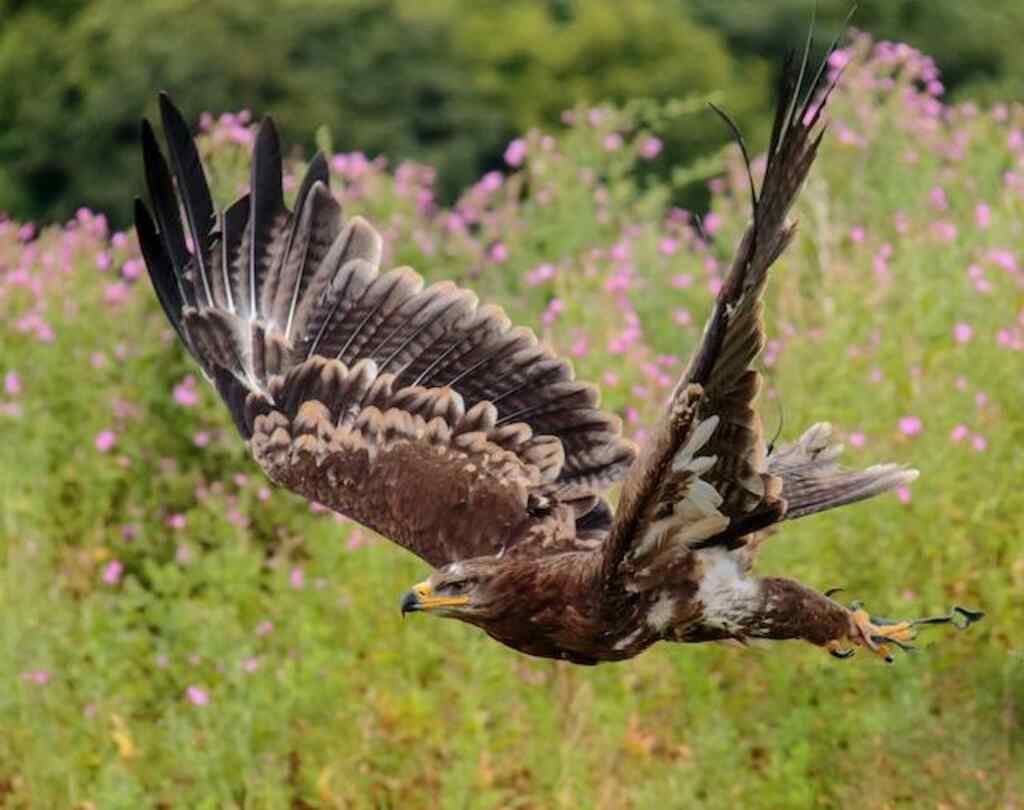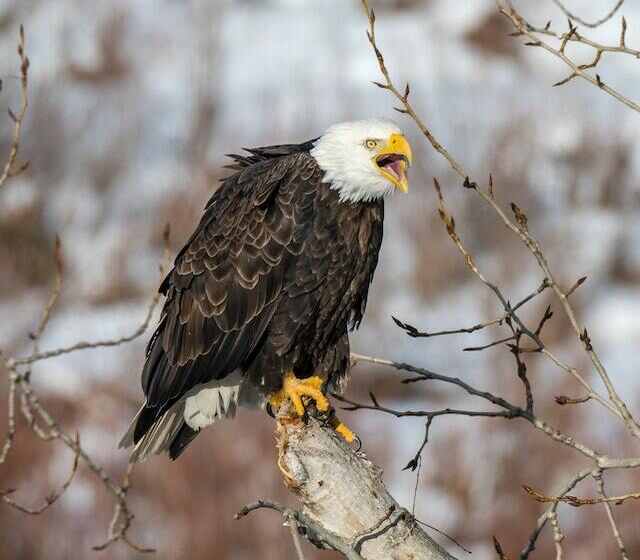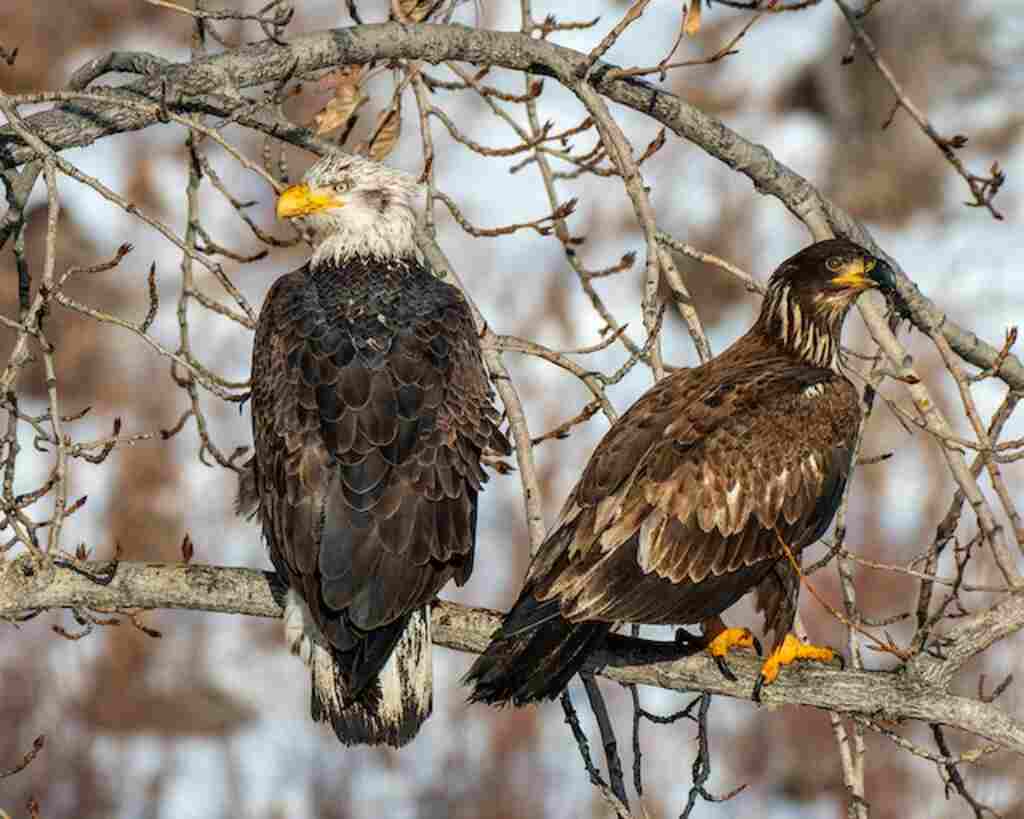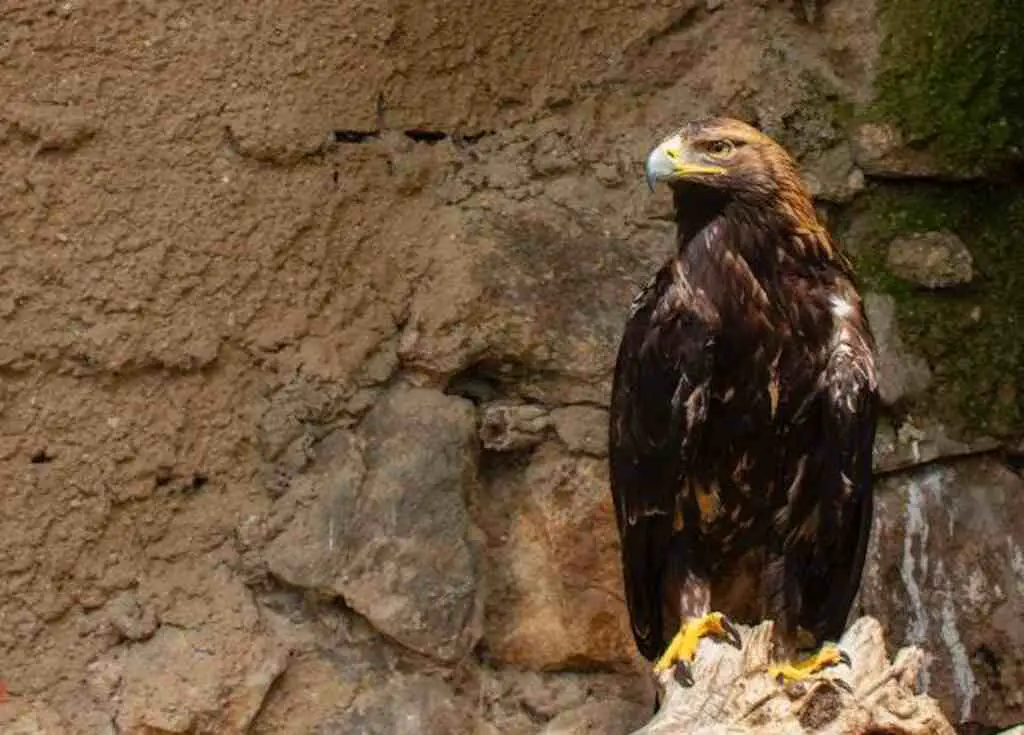Prepare to unravel the captivating world of predator-prey relationships as we dive into the question that has puzzled nature enthusiasts for ages: Do Eagles Eat Raccoons?
In this wild exploration, we’ll venture into the remarkable realms of eagles and raccoons, their cunning natures, and the potential encounters that fuel our curiosity.
Get ready to feast on insights into diets, behaviors, territories, and rare interactions between these captivating creatures. Join us as we uncover the secrets hidden within the untamed tapestry of nature.
Table of Contents
- 1 Key Takeaways
- 2 Bald Eagle Diet and Feeding Habits
- 3 Raccoon Diet and Behavior
- 4 Overlapping Territories and Interactions
- 5 Studies and Observations
- 6 Predatory Relationships with Other Animals
- 7 Factors Influencing Eagle Prey Selection
- 8 Do Eagles Eat Raccoons
- 9 Rare Instances of Eagle-Raccoon Interactions
- 10 Importance of Raccoons in the Ecosystem
- 11 Further Research and Resources
- 12 Frequently Asked Questions
- 13 Conclusion
- 14 Author
Key Takeaways
- Eagles and raccoons have a competitive relationship and compete for food and territory.
- Eagles primarily eat fish, but can also feed on raccoons, potentially impacting raccoon populations.
- Raccoons have a varied diet and are opportunistic feeders, scavenging from human garbage and hunting for various food sources.
- Understanding eagle-raccoon interactions is crucial for conservation efforts and maintaining ecosystem balance.

Bald Eagle Diet and Feeding Habits
Bald eagles have a varied diet consisting primarily of fish, but they have been known to opportunistically feed on small mammals such as raccoons, evoking a sense of awe and wonder at their adaptability and predatory prowess.
This dietary flexibility has contributed to the successful expansion of the bald eagle population across North America.
However, the impact of bald eagles on the raccoon population dynamics is not well understood.
Studies have shown that raccoon populations can be influenced by predation from bald eagles, particularly in areas where raccoon densities are high.
The presence of bald eagles can lead to behavioral changes in raccoons, such as altered foraging patterns and increased vigilance.
These dynamics between bald eagles and raccoons highlight the intricate interactions within ecosystems and the complex dynamics of predator-prey relationships.
Without the use of personal pronouns, we can now transition into discussing the raccoon’s diet and behavior.
Raccoon Diet and Behavior
Raccoons have a varied diet and exhibit opportunistic feeding behavior. They are omnivorous, meaning they consume both plant and animal matter.
Their diet primarily consists of fruits, nuts, insects, small mammals, birds, amphibians, and fish. This adaptability allows raccoons to thrive in a wide range of habitats, from forests to urban areas.
They have a remarkable ability to manipulate objects with their dexterous paws, enabling them to access different food sources.
Raccoons are also known to scavenge from human garbage and raid gardens, causing conflicts with humans.
Their behavior is largely nocturnal, with peak activity occurring during the night.
Raccoons are solitary animals but can form small groups, particularly during the mating season or when food resources are abundant.
These aspects of raccoon diet and behavior are important to understand when considering their overlapping territories and interactions with other species.
Overlapping Territories and Interactions
The overlapping territories and interactions of different species can often lead to conflicts and competition for resources, creating a complex web of relationships in the natural world.
When it comes to eagles and raccoons, their interactions are primarily centered around competition for food and territorial disputes.
Eagles are opportunistic predators and will readily prey on raccoons if given the chance.
Raccoons, on the other hand, are omnivorous and will scavenge for a variety of food sources, including the remains of eagle kills.
This competition for resources can lead to territorial disputes, with both species defending their preferred hunting and foraging grounds.
Studies and observations have shown that eagles often have the upper hand in these conflicts, due to their superior size, strength, and hunting abilities.
Transitioning to the subsequent section about ‘studies and observations’, these conflicts have been extensively documented and provide valuable insights into the dynamics of interspecies interactions.

Studies and Observations
Researchers have conducted extensive studies and observations on the interactions between eagles and raccoons, shedding light on the intricate dynamics of interspecies competition and territorial disputes.
These studies have revealed that eagles and raccoons often compete for resources such as food and nesting sites, leading to complex interactions between the two species.
Eagles, being large and powerful birds of prey, have been observed to dominate raccoons in direct confrontations, often forcing them to retreat or abandon their territories.
However, raccoons have also been observed to utilize their agility and adaptability to outmaneuver eagles in certain situations, such as when accessing food sources in trees or navigating through dense vegetation.
Furthermore, researchers have found that the population dynamics of raccoons can be influenced by the presence of eagles, as their predation can impact raccoon numbers.
Transitioning into the subsequent section about predatory relationships with other animals, it becomes evident that eagles’ interactions with raccoons are just one aspect of their broader predatory behavior.
Predatory Relationships with Other Animals
Interactions between eagles and other animals reveal a complex web of predatory relationships. Eagles and raccoons are known to have a competitive relationship, as both species are opportunistic predators.
While eagles primarily feed on fish and small mammals, raccoons are known to scavenge and hunt for a variety of food sources, including bird eggs and nestlings.
In some cases, raccoons have been observed preying on eagle eggs, which can have a negative impact on eagle populations.
To further understand the dynamics of this relationship, a 2-column, 5-row table is presented below:
| Eagle Behavior | Raccoon Behavior |
|---|---|
| Hunts for fish and small mammals | Scavenges and hunts for various food sources |
| Constructs large nests in trees | Prefers ground-level dens |
| Has sharp talons and beak for hunting | Possesses dexterous paws for manipulating objects |
| Forms monogamous pairs for breeding | Generally solitary, but can tolerate group living |
| Exhibits territorial behavior around nests | Displays territorial behavior around food sources |
Factors influencing eagle prey selection will be discussed in the subsequent section, shedding light on the intricate mechanisms behind their hunting strategies.
Factors Influencing Eagle Prey Selection
Factors such as ecological niche, prey availability, and competition for resources play a crucial role in shaping the prey selection of eagles.
When it comes to hunting techniques, eagles are known for their exceptional eyesight, powerful talons, and strong beaks.
They primarily target small to medium-sized mammals, birds, and fish. Raccoons, being medium-sized mammals, can be potential prey for eagles depending on various factors.
However, the prey selection of eagles is not solely determined by the presence or abundance of raccoons.
Other factors such as raccoon population dynamics, the availability of alternative prey, and the competition for resources also influence the likelihood of eagle-raccoon interactions.
Rare instances of eagle-raccoon interactions have been observed, but they are not common.

Do Eagles Eat Raccoons
No, eagles do not typically eat raccoons. While eagles are skilled predators known to capture a wide range of prey, their primary diet consists of fish, small mammals, birds, and carrion.
Raccoons, with their adaptability and cunning nature, are not a common food source for eagles. Their diets and habitats often differ, limiting the likelihood of eagle-raccoon interactions.
Rare Instances of Eagle-Raccoon Interactions
Occasionally, the presence of raccoons in the diet of eagles is observed, but such instances are relatively rare.
Eagle-raccoon conflicts are not a common occurrence, as eagles typically prefer to feed on fish, small mammals, and birds.
However, there have been documented cases where eagles have been observed hunting and consuming raccoons.
These interactions between eagles and raccoons can have an impact on local wildlife populations.
Raccoons play an important role in the ecosystem, as they help control populations of small mammals and insects.
Therefore, if eagles were to prey on raccoons more frequently, it could potentially disrupt the delicate balance of the ecosystem.
Understanding the dynamics of eagle-raccoon interactions is crucial for conservation efforts and maintaining the biodiversity of the natural environment.
Importance of Raccoons in the Ecosystem
Raccoons, with their omnivorous diet and ability to control populations of small mammals and insects, play a vital role in maintaining the delicate balance of the ecosystem.
The ecological impact of raccoons extends beyond their predation on small mammals and insects. Here are three key ways in which raccoons contribute to the ecosystem:
- Seed dispersal: Raccoons consume a variety of fruits and nuts, helping to disperse seeds across different areas. This promotes the growth and diversity of plant species, which is essential for maintaining a healthy ecosystem.
- Nutrient cycling: Raccoons scavenge on carrion, dead animals, and decaying plant matter. Through their feeding habits, they facilitate the breakdown of organic matter and return important nutrients to the soil, contributing to the overall nutrient cycling process.
- Prey for predators: Raccoons serve as a food source for many predators, including larger mammals and birds of prey. Their presence in the ecosystem provides sustenance for these predators, helping to maintain a balanced predator-prey relationship.
Understanding the raccoon population control and their ecological impact is crucial for effective ecosystem management.
Further research and resources can provide valuable insights into the intricate interactions within the ecosystem and aid in making informed conservation decisions.
Further Research and Resources
Additional research and access to comprehensive resources are essential for gaining a deeper understanding of the intricate ecological interactions involving raccoons and their impact on the ecosystem, which in turn can evoke a sense of awe and appreciation for the delicate balance of nature.
Investigating raccoon population control methods and their impact on other wildlife is crucial in managing and preserving the ecosystem’s stability.
By studying the relationship between raccoons and their prey, such as small mammals and birds, researchers can assess the potential effects of raccoon predation on these species.
Additionally, understanding raccoons’ role in seed dispersal and their impact on vegetation growth can provide insights into the broader ecological consequences of raccoon behavior.
Furthermore, exploring the potential benefits or drawbacks of raccoon population control measures, such as trapping or hunting, can aid in making informed management decisions.
A comprehensive understanding of these topics will contribute to the conservation and sustainable management of raccoon populations and their ecological impact.
| Raccoon Population Control Methods | Impact on Other Wildlife |
|---|---|
| Trapping | Predation |
| Hunting | Competition |
| Fertility Control | Habitat Modification |
| Sterilization | Disease Transmission |
| —————- | ———————- |
| Sterilization can help control the population of certain wildlife species, but it may also have unintended consequences by increasing the transmission of diseases among animals. |

Frequently Asked Questions
How do eagles hunt for raccoons?
Eagles employ various hunting techniques to capture their prey, such as aerial pursuit and ambush. Raccoons, known for their nocturnal behavior and omnivorous diet, may become targets due to their vulnerability during foraging activities.
Can raccoons defend themselves against eagles?
Raccoons can defend themselves against eagles through a combination of physical attributes and behavioral adaptations. They have sharp claws, strong jaws, and are agile climbers, allowing them to escape or fight back. Additionally, raccoons can display aggressive behaviors and emit vocalizations to deter predators.
Do eagles prefer to eat raccoons over other prey?
Eagles employ various hunting techniques, including aerial attacks and ambushes, to capture prey. Understanding raccoon population dynamics is crucial in determining if eagles prefer them over other prey.
Are raccoons a primary food source for eagles?
Raccoons are not a primary food source for eagles. While eagles may occasionally prey on raccoons, their diet consists mainly of fish, small mammals, and birds. The impact of raccoons on the eagle population is minimal.
How do eagles locate raccoons in their habitats?
Eagles employ remarkable hunting techniques to locate raccoons in their habitats. With their keen eyesight and powerful talons, they spot raccoons hiding in trees or on the ground. Raccoons, known for their adaptability, make a challenging and rewarding prey for eagles.

Conclusion
In conclusion, the diet and feeding habits of bald eagles are influenced by various factors, including prey availability and competition with other predators.
While raccoons are not a primary food source for eagles, there are rare instances of eagle-raccoon interactions. These interactions highlight the adaptability and opportunistic nature of bald eagles.
Interestingly, a study conducted in a specific region found that eagles consumed raccoons in approximately 4% of their diet.
This statistic demonstrates the dynamic nature of predator-prey relationships and the importance of further research in understanding the ecological role of raccoons.


